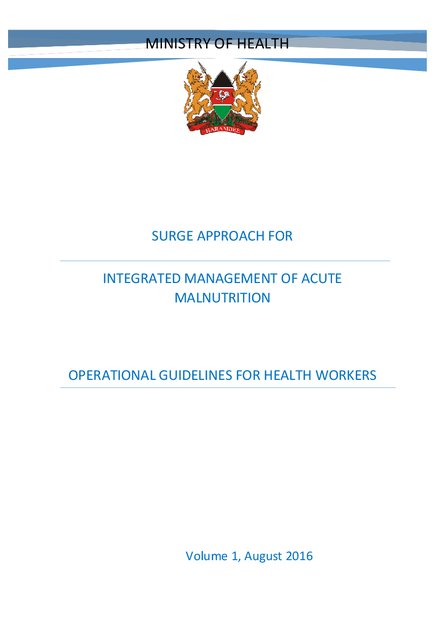
The Integrated Management of Acute Malnutrition (IMAM) was endorsed by the Ministry of Health (MoH) in Kenya in 2009 to manage cases of acute malnutrition and is one of the 11 High Impact Nutrition Interventions (HINI)1 that Kenya has adopted. The northern arid and semi-arid lands (ASAL) of Kenya are particularly vulnerable to a wide range of frequent stresses and shocks, in particular drought and its negative impact on livelihoods. ASAL areas were affected by severe droughts in 2010 and 2011, adding to pre-existing chronic and acute food insecurity, poor dietary diversity and generally poor health, hygiene and sanitation conditions. These areas have received many ‘stop-start’ episodes of external emergency aid and support over the years, triggering interest in a more sustainable approach.
The surge approach was first proposed in Kenya as an alternative way of working to strengthen services for IMAM2. Concern Worldwide with MoH counterparts, developed the concept and approach and piloted it in some ASAL areas of Kenya and Uganda. The pilots have been internally and externally evaluated and have led to the development of this operational guide to facilitate expansion of the surge approach to other parts of Kenya. The guide will remain a living document for the next one year to encourage incorporation of learning and new developments as the approach expands to different contexts, counties and stakeholders